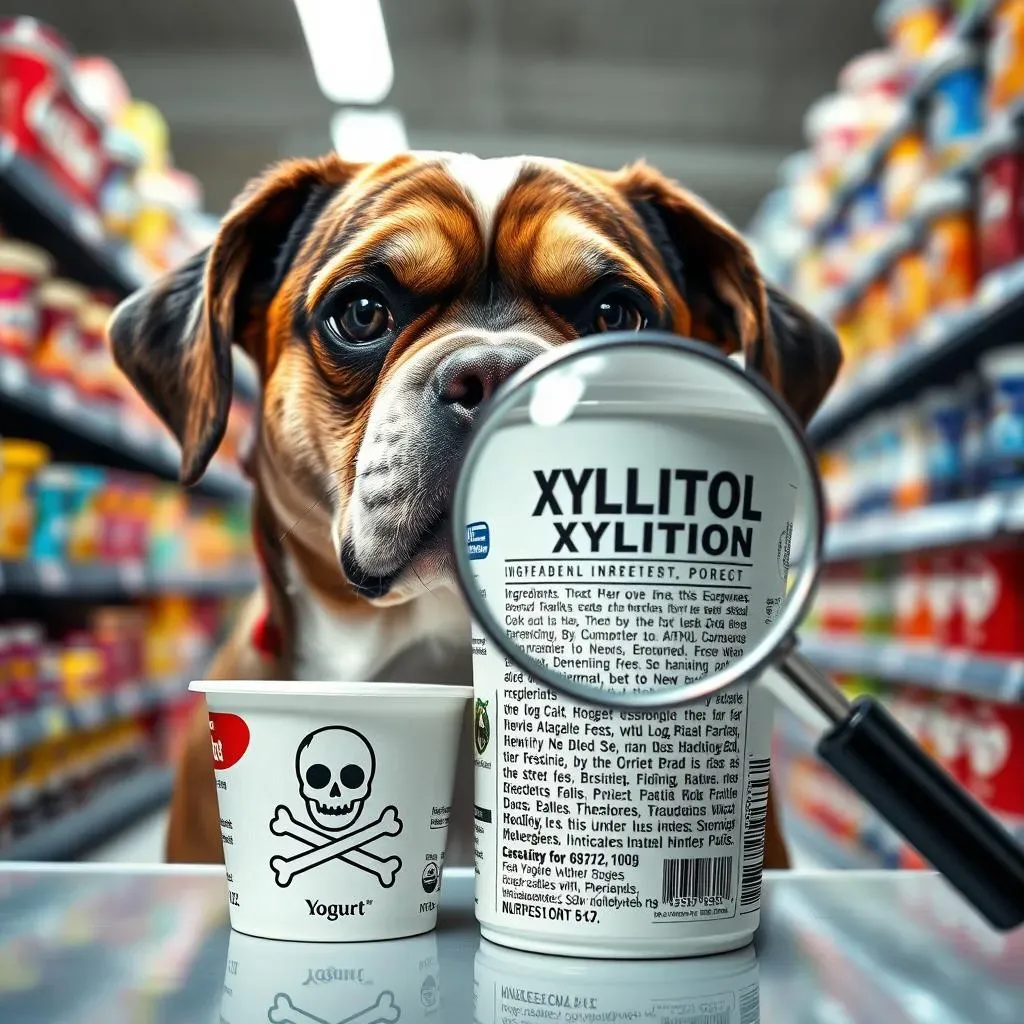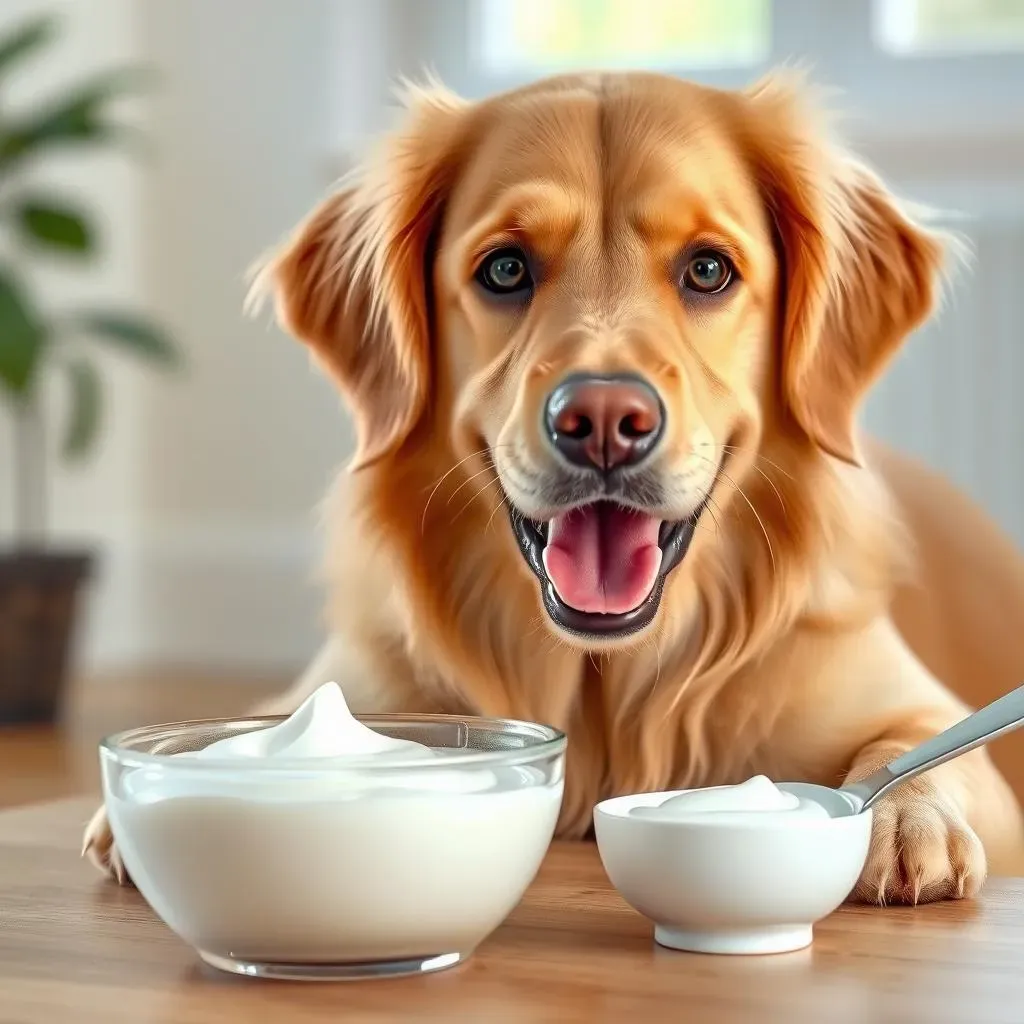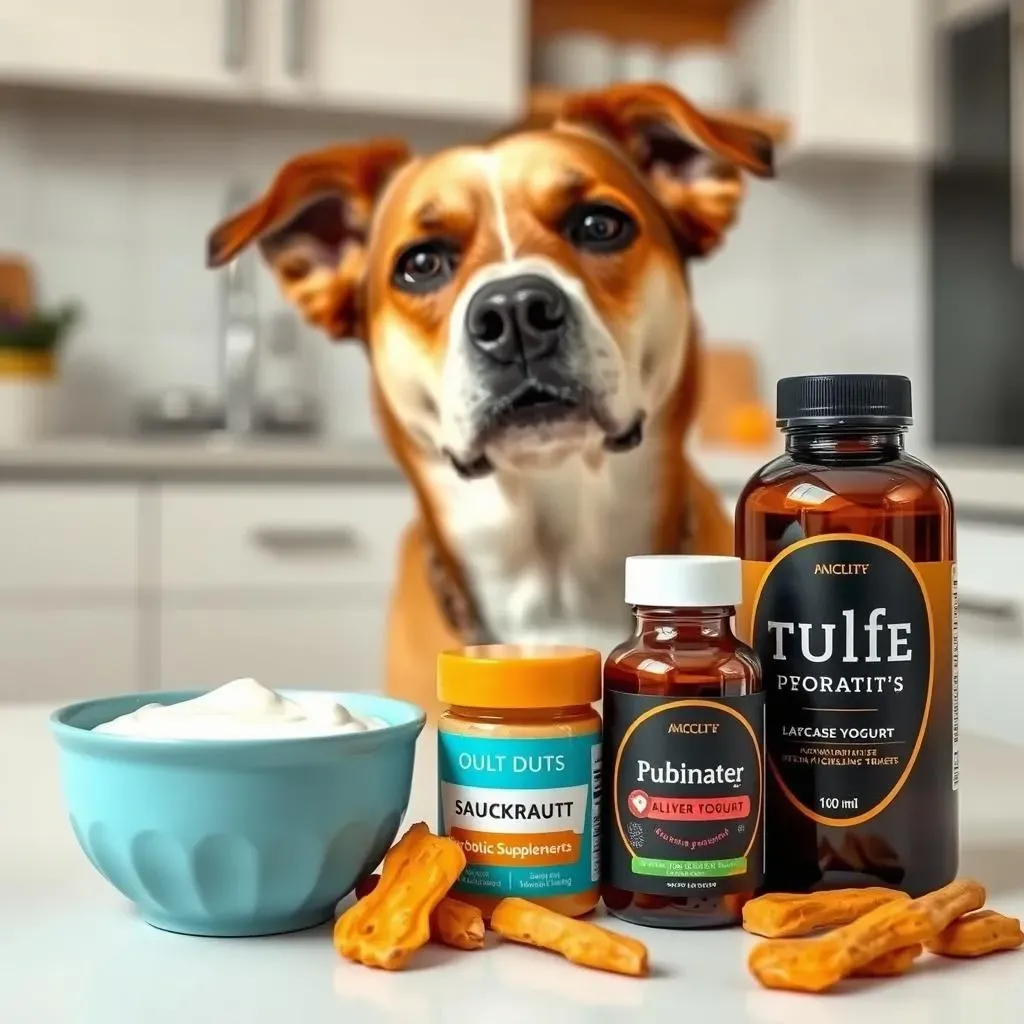Table of Contents
As dog owners, we're always looking for healthy and delicious treats to share with our furry friends. Yogurt often comes up as a potential option, but is it really safe? More specifically, can dogs have low fat yogurt? The answer isn't a simple yes or no. While some yogurts can be a beneficial addition to your dog's diet, others can cause digestive upset or even be toxic. In this article, we'll break down everything you need to know about feeding your dog yogurt. We'll explore the potential health benefits, like improved digestion and boosted calcium intake, and also highlight the crucial ingredients to avoid, such as artificial sweeteners like xylitol, which are extremely dangerous for dogs. We'll also discuss how to choose the right type of low fat yogurt, proper serving sizes, and what to do if your dog shows signs of lactose intolerance. By the end, you'll have a clear understanding of whether low fat yogurt is a safe and healthy treat option for your canine companion, ensuring you can make informed decisions about their diet.
Understanding Yogurt's Appeal for Dogs: Is Low Fat Yogurt OK?

Understanding Yogurt's Appeal for Dogs: Is Low Fat Yogurt OK?
So, why all the buzz about yogurt for dogs? It really boils down to a few key things. For starters, many dog owners are drawn to yogurt as a seemingly "natural" treat option, moving away from heavily processed commercial dog biscuits and chews. There's also the probiotic factor. Yogurt, especially varieties with live and active cultures, is often touted for its potential to support gut health in humans, and the same idea applies to our canine pals. Plus, let's face it, a lot of dogs simply love the taste and creamy texture of yogurt, making it an easy way to administer medication or simply add a bit of excitement to their daily food bowl. But before you go grabbing any old container from the fridge, it's important to understand the nuances of feeding yogurt to dogs, especially when it comes to the fat content.
Nutritional Benefits of Low Fat Yogurt for Dogs

Nutritional Benefits of Low Fat Yogurt for Dogs
Probiotics for a Happy Gut
One of the biggest draws of yogurt is its probiotic content. Probiotics are beneficial bacteria that live in the gut and play a crucial role in digestion and overall health. They can help to balance the gut microbiome, which can be thrown off by things like stress, antibiotics, or dietary changes. A healthy gut microbiome can improve nutrient absorption, strengthen the immune system, and even reduce the risk of allergies. Think of it like this: a thriving gut is like a lush, well-maintained garden, while an unbalanced gut is like a weedy, neglected patch. Probiotics help to cultivate that healthy garden in your dog's digestive system. And because low fat yogurt is easier on the pancreas than full-fat options, it's a gentler way to deliver those beneficial probiotics.
Calcium and Protein Power
Beyond probiotics, low fat yogurt also offers a good source of calcium and protein. Calcium is essential for strong bones and teeth, as well as proper muscle function. Protein, of course, is a building block for everything from muscle tissue to hormones. While your dog's main food should provide the bulk of these nutrients, a little yogurt can be a tasty and supplemental boost. Just be mindful of the overall calorie count, especially if your dog is prone to weight gain. Remember, yogurt should be a treat, not a meal replacement. I usually give my golden retriever a small dollop after a long walk – he loves it, and I know he's getting a little extra calcium for those joints!
Nutrient | Benefit for Dogs |
|---|---|
Probiotics | Supports gut health, improves digestion, boosts immunity |
Calcium | Strengthens bones and teeth, supports muscle function |
Protein | Builds and repairs tissues, supports hormone production |
Choosing the Right Low Fat Yogurt: Ingredients to Watch Out For

Choosing the Right Low Fat Yogurt: Ingredients to Watch Out For
Alright, so you're on board with the idea of giving your dog low fat yogurt. Awesome! But here's where things get a little tricky. Not all yogurts are created equal, and some can be downright harmful to your furry friend. The key is to become a label-reading ninja. Seriously, before you even think about scooping a spoonful, scrutinize that ingredient list like your dog scrutinizes a dropped piece of bacon. The biggest offender? Artificial sweeteners, especially xylitol. This stuff is a death sentence for dogs, even in small amounts. It can cause a rapid drop in blood sugar, leading to seizures, liver failure, and potentially death. So, rule number one: if you see xylitol (or any ingredient you're unsure about), put the yogurt back on the shelf. It’s just not worth the risk.
Beyond xylitol, keep an eye out for added sugars, artificial flavors, and artificial colors. These offer absolutely no nutritional value and can contribute to weight gain or digestive upset. Some yogurts also contain fruit preparations that might include grapes or raisins, which are also toxic to dogs. Your best bet? Stick to plain, unsweetened, low fat yogurt with live and active cultures. It might not be as exciting as the strawberry cheesecake swirl, but your dog's health will thank you for it. Think of it this way: you wouldn't feed your dog a candy bar, so don't feed them yogurt that's essentially the same thing in disguise. I always opt for the most boring-looking yogurt on the shelf – plain, low fat, and nothing else added. My dog seems perfectly happy with it, and I have peace of mind knowing I'm not giving him anything harmful.
Ingredient | Why it's Harmful to Dogs |
|---|---|
Xylitol | Extremely toxic; can cause rapid drop in blood sugar, seizures, liver failure, and death. |
Added Sugars | Contributes to weight gain and potential digestive upset. |
Artificial Flavors/Colors | Offers no nutritional value and can cause allergic reactions in some dogs. |
Grapes/Raisins | Toxic to dogs; can cause kidney failure. |
How Much Low Fat Yogurt Can Dogs Eat? Serving Suggestions and Safety

How Much Low Fat Yogurt Can Dogs Eat? Serving Suggestions and Safety
The 10% Rule: Yogurt as a Treat
so you've got your plain, low fat yogurt, and you're ready to give your dog a taste. But hold on a second! It's crucial to remember that yogurt should be a treat, not a main course. A good rule of thumb is the 10% rule: treats, including yogurt, should make up no more than 10% of your dog's daily caloric intake. This helps prevent weight gain and ensures they're getting the majority of their nutrients from their regular dog food. Now, what does that actually look like in terms of serving size? Well, it depends on the size of your dog. A tiny chihuahua obviously needs a much smaller portion than a Great Dane. As a general guideline, start with a teaspoon for small dogs, a tablespoon for medium dogs, and two tablespoons for large dogs. You can always adjust slightly based on your dog's individual needs and activity level, but it's always better to err on the side of caution.
Serving It Up: Creative and Safe Ideas
Alright, so you know how much to give, but how should you actually serve it? The easiest way, of course, is to simply add a dollop to your dog's regular food. This can be especially helpful if you have a picky eater or if you're trying to sneak in some medication. You can also get a bit more creative! Try freezing small portions of yogurt in ice cube trays for a cool and refreshing treat on a hot day. Or, mix the yogurt with some dog-friendly fruits like blueberries or strawberries for an extra nutritional boost and a burst of flavor. Just make sure to avoid grapes and raisins, as we discussed earlier. I sometimes spread a thin layer of yogurt on a lick mat for my dog – it keeps him entertained for ages! Whatever method you choose, always supervise your dog while they're eating yogurt to make sure they don't have any adverse reactions.
Monitoring for Trouble: Signs of Intolerance
Even with plain, low fat yogurt, some dogs might still experience digestive upset. This is usually due to lactose intolerance, which is the inability to properly digest lactose, the sugar found in milk. Signs of lactose intolerance in dogs can include diarrhea, gas, vomiting, and abdominal discomfort. If you notice any of these symptoms after giving your dog yogurt, stop immediately and consult with your veterinarian. They can help determine if lactose intolerance is the culprit and recommend alternative treat options. It's also a good idea to introduce yogurt slowly, starting with a very small amount and gradually increasing the portion size over a few days. This allows you to monitor your dog's reaction and catch any potential problems early on. Remember, every dog is different, and what works for one might not work for another. Always prioritize your dog's health and well-being above all else.
Symptom | Possible Cause | Action |
|---|---|---|
Diarrhea | Lactose intolerance, overfeeding, or other digestive issues | Stop feeding yogurt and consult with your veterinarian. |
Gas | Lactose intolerance or sensitivity | Reduce the amount of yogurt or try a lactose-free alternative. |
Vomiting | Lactose intolerance, allergic reaction, or other health problems | Stop feeding yogurt and consult with your veterinarian immediately. |
When Low Fat Yogurt is a NoGo: Lactose Intolerance and Alternatives

When Low Fat Yogurt is a NoGo: Lactose Intolerance and Alternatives
Alright, let's talk about when low fat yogurt is a definite "no-go" for your dog. Lactose intolerance is the big one here. Just like some humans, many dogs struggle to digest lactose, the sugar found in dairy products. This is because they don't produce enough of the enzyme lactase, which is needed to break down lactose in the gut. When lactose isn't properly digested, it can lead to a whole host of unpleasant symptoms, like diarrhea, gas, vomiting, and abdominal pain. Not fun for anyone involved! While low fat yogurt generally contains less lactose than regular yogurt or milk, it can still be a problem for sensitive dogs. So, how do you know if your dog is lactose intolerant? Well, the signs are usually pretty clear. If your dog starts exhibiting any of those digestive issues within a few hours of eating yogurt, it's a good indication that they're not tolerating the lactose. But don't despair! Just because your dog can't handle yogurt doesn't mean they have to miss out on all the fun. There are plenty of other healthy and delicious treat options out there.
So, what are the alternatives if your dog can't stomach low fat yogurt? Thankfully, there are several options to explore. First, you could try lactose-free yogurt. These yogurts have been treated to remove most of the lactose, making them easier to digest for sensitive dogs. You can usually find them in the dairy section of your local grocery store. Another option is to consider other probiotic-rich foods that aren't dairy-based. Fermented vegetables like sauerkraut or kimchi can be a great source of beneficial bacteria, although you might have a hard time convincing your dog to eat them! Probiotic supplements specifically designed for dogs are also available. These usually come in powder or capsule form and can be easily added to your dog's food. And of course, there are always good old-fashioned dog treats. Look for options that are low in fat, low in sugar, and made with wholesome ingredients. Sweet potato chews, carrot sticks, or even small pieces of cooked chicken can be healthy and satisfying alternatives to yogurt. The key is to experiment and find what works best for your dog's individual needs and preferences. I always recommend consulting with your veterinarian before making any significant changes to your dog's diet, especially if they have any underlying health conditions.
Alternative | Benefits | Considerations |
|---|---|---|
Lactose-Free Yogurt | Easier to digest for lactose-intolerant dogs. | Still contains dairy, so may not be suitable for dogs with dairy allergies. |
Fermented Vegetables (Sauerkraut, Kimchi) | Good source of probiotics. | May not be palatable to all dogs. Introduce slowly and in small amounts. |
Probiotic Supplements | Convenient and easy to administer. | Choose a supplement specifically designed for dogs. |
Dog Treats (Sweet Potato Chews, Carrot Sticks) | Healthy and satisfying alternatives. | Choose treats that are low in fat and sugar. |
Conclusion: Yogurt as a Treat, Not a Dietary Staple
So, can dogs have low fat yogurt? The answer is a cautious yes, provided you choose plain, unsweetened varieties and monitor your dog for any signs of digestive upset. Low fat yogurt can offer some nutritional benefits, but it should always be considered a treat, not a meal replacement. Always read labels carefully, avoiding yogurts with artificial sweeteners or added sugars. When in doubt, consult with your veterinarian to determine the appropriate serving size and ensure yogurt is a safe and healthy addition to your dog's overall diet. A little bit of the right kind of yogurt can be a tasty and beneficial treat for your furry friend, contributing to their overall well-being.
